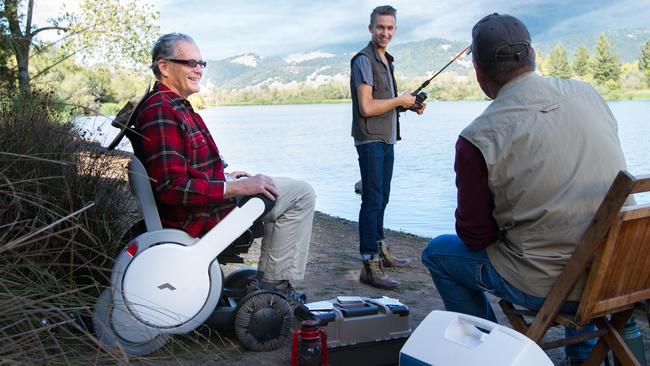TiLite, of Sweden, gives the wheelchair a hi-tech makeover
Technical breakthroughs promise vastly improved mobility for the disabled and the elderly.

Wheelchairs have come a long way since the advent of the motorised model in 1953.
In fact, even the term wheelchair has fallen out of favour. Now it’s a “personal mobility device”.
Models coming on the market or in development can climb stairs, turn tight corners, make their way over trails, and are lighter and easier to manoeuvre than earlier generations.
Technical breakthroughs in software, batteries, sensors and lower-cost hardware manufacturing have inspired a recent burst of innovation in personal mobility.
At the same time, market demand for these devices is expected to increase with the ageing boomer population. Improving technology also makes them more helpful for elder care and elder assistance and for the 2 per cent of the population estimated to need a personal mobility device.
Innovation is coming not just to motorised wheelchairs but to manually operated models, too. Tapping technologies already common in bicycles and motorcycles, newest designs are built with carbon fibre, titanium, aluminium and hybrid plastics to be lean and light but durable.
The titanium and aluminium frame of a rigid (or non-folding) wheelchair made by TiLite, a unit of Sweden-based Permobil, weighs about 6kg, while the folding wheelchairs seen in short-term use in airports and hospitals weigh 15kg to 20kg. TiLite uses sophisticated 3-D design software, including SolidWorks, to custom-fit its manual chairs to a customer’s body, says TiLite vice-president of product Josh Anderson.
Among motorised versions, newer designs make it possible for wheelchairs to do things that weren’t possible before. One chair in development, the Scalevo, can climb stairs so that users don’t need to find a ramp or a separate device to manoeuvre up stairs.
The prototype, from ETH Zurich’s Automatic Systems Laboratory in Switzerland, features tracks alongside the two wheels that bite on to each step and pull the chair up. Additional balancing mechanisms keep the seat level as the chair ascends or descends, so a user won’t risk toppling out. The device is still some way off being ready for market.
Most motorised chairs now depend on footpaths, streets or other smooth surfaces to get around. A four-wheel-drive alternative available from Whill Inc, based in the US, features all-directional front wheels that enable it to travel across squishy lawns, snow or rocky paths. The chair, the Whill Model A, can clear obstacles 8cm high, travel up to 9km/h and ride on a 10-degree incline. On a full battery charge, the Model A has a range of about 16km.
The Whill is relatively compact and allows its driver to make tight turns. The chair has a smartphone app, enabling users to drive it, adjust the seat and change other settings through a phone.
In the future, personal mobility for people with disabilities won’t be limited to chairs, says Larry Jasinski, chief executive of ReWalk Robotics Inc, a US company that is making a robotic exoskeleton that can help people to walk.
Exoskeletons from ReWalk and other companies are used in physical rehabilitation for those with partial paralysis.
However, Jasinski says wheelchairs will always be useful to people with disabilities. One of his customers had a custom wheelchair built that allows him to wear his ReWalk Personal robotic exoskeleton while he is sitting in it, and to stand up out of his chair and walk whenever he wishes.
The Wall Street Journal


